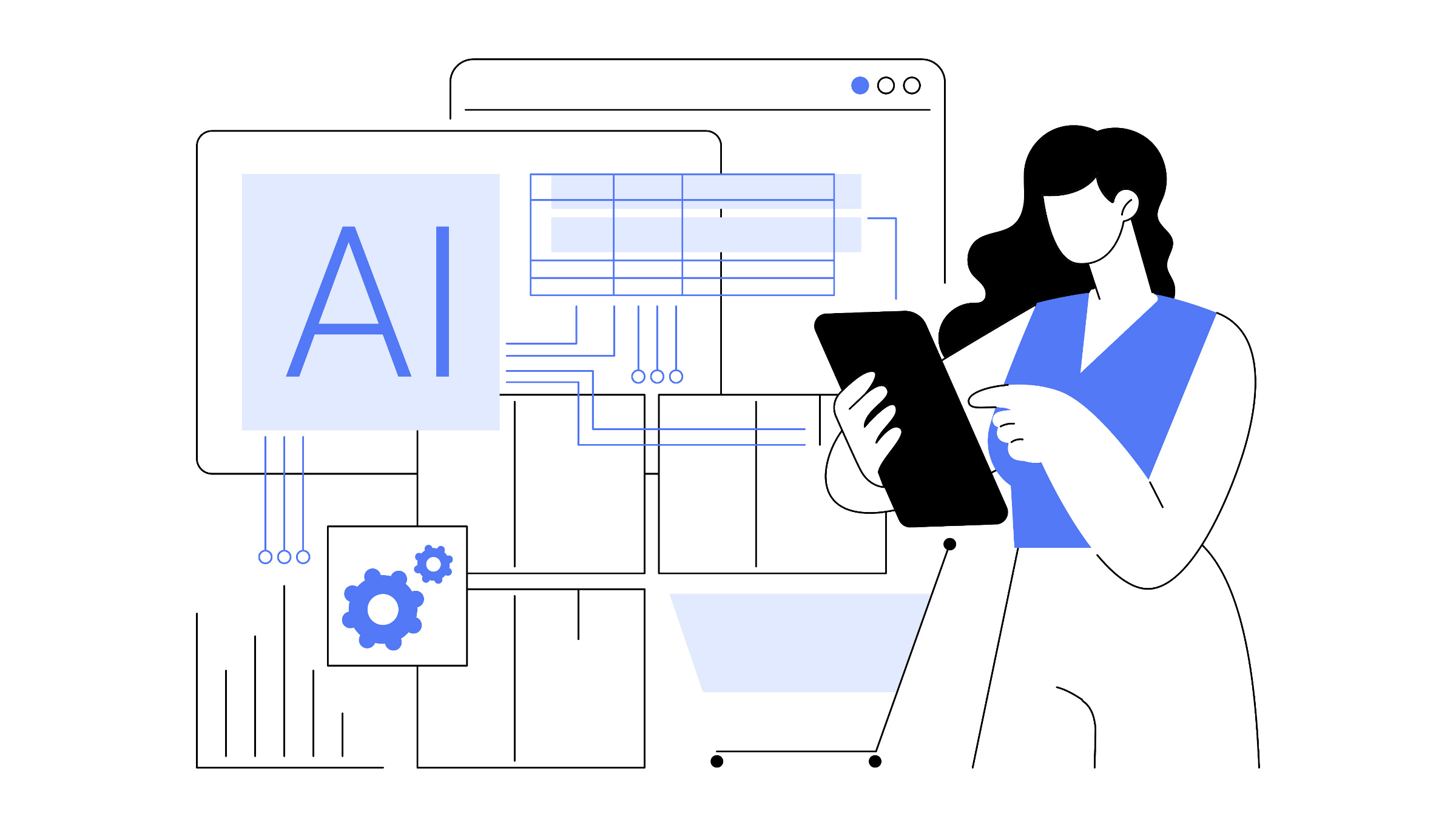The swift expansion of data-intensive, high-performance computing alongside an exploding array of artificial intelligence (AI) workload demands are driving demand for resilient, low-power nonvolatile memory. Across evolving technologies, phase-change memory (PCM) based on chalcogenides is poised for a new set of innovation breakthroughs that address the performance divide between data storage solutions such as flash (nonvolatile, although relatively slow) and dynamic random-access memory (rapid yet volatile). Moreover, PCM gains from large memory window (>100x ratio between resistance states) and multilevel operation, which are valuable for brain-inspired computing (neuromorphic) applications.
Mainly, it is PCM’s known ability to take advantage of the unique behavior of chalcogenide glass. Heat generated by an electric current passing through a heating element, typically made of titanium nitride, is used to both rapidly heat and quench the glass, rendering it amorphous and maintaining its crystallization state. As such, PCM cells also can attain intermediary states, enabling them to store multiple bits in a single cell. Notably, programming cells with this approach has proven difficult, preventing extensive adoption in other technologies such as flash memory.
Recent research targets uncovering alternative materials to the commonly used Ge2Sb2Te5 (GST225) phase-changing materials. Garnering high development priority is Interfacial Phase-Change Memory (IPCM), which explores superlattices of GeTe and Sb2Te3 for non-thermal phase changes using laser pulses. This puts the spotlight on PCM’s potential for in-memory computing and neuromorphic computing.
Specifically, PCM based on traditional phase-change materials such as GST225 is known to suffer from high switching power and resistance drift, i.e., gradual change of resistance states over time. Intel, for instance, offered products based on PCM, however such drawbacks have held up PCM’s market potential. Recent progress on PCM devices has focused on lowering their reset energy, although the on/off ratio, endurance, uniformity, and process compatibility need improvement. Some initiatives have increased PCM’s speed, but at the expense of reduced thermal stability, larger set voltage, or larger reset current.
Solving Memory Trade-offs
In recent years, phase change materials arranged in superlattice stacks with alternating layers of GeTe/Sb2Te3, TiTe2/Sb2Te3, GeSb2Te4/Sb2Te3, and Sb2Te3/GST225 have enabled lower switching current and resistance drift of PCM, due to structural and electro-thermal confinement caused by van der Waals interfaces within such superlattices.
Specifically, a van der Waals interface refers to the interaction between two or more atoms or molecules that are very close to each other. These interactions arise from induced electrical forces and are the weakest of all intermolecular attractions. However, when many van der Waals forces act between two objects, their cumulative effect can be quite strong. The ongoing research in PCM superlattices innovation aims to take advantage of this behavior.
So far, superlattice materials have not been optimized for the well-known trade-off between speed and stability, especially at higher temperatures, of PCM devices, while superlattice memory cells have not yet been demonstrated with nanoscale dimensions. In other words, can superlattice-based PCMs maintain advantages as they approach the limits of size scaling, or is their performance curtailed by fundamental trade-offs?
Obstacles Loom
However, there is a notable caveat. How rapidly industry will embrace PCM innovations, if at all, is undetermined. Generally, industry prefers using “confined cells,” due to their familiarity and proven track record. The combination of PCM superlattices and nanocomposites uses “mushroom cells,” which may experience some crosstalk in high-density arrays. Regardless, the fundamental advantages of the PCM superlattices are very clear and can demonstrably outweigh potential crosstalk concerns.
As such, there is the ongoing question as to whether industry can fabricate such memory devices at low-enough cost and high-enough density to justify placing them in various applications, from automotive to neuromorphic. The key advance in PCM superlattice work has been demonstrated through the proof of concept of such memory, with fabrication methods that are already industry-compatible. Another challenge is the availability and reliability of memory selectors, additional devices needed to pick out each memory cell within an array.
“Our memory devices are not quite as fast as SRAM, but they are a big step in the direction of a ‘holy grail’ of data storage,” says Eric Pop, the Pease-Ye Professor of Electrical Engineering (EE) and, by courtesy, of Materials Science & Engineering and of Applied Physics at Stanford University. “Such a universal memory would be very fast, very dense, reliable, low-voltage, easy to integrate with computer processors—and also non-volatile.”
Why PCM Superlattice Breakthrough is a Game-Changer
The proposition of a novel combination of PCM superlattices and nanocomposites can achieve record low power density and switching voltage in PCM devices with the smallest dimension to date can be properly viewed as a game-changing breakthrough.
Why is this the case? This technologically significant development can be understood as game-changing in the sense that there is a wide array of things to optimize that pushes the technology in several directions, including voltage, endurance, and power. The research conducted by the Stanford team is using a diverse set of benchmarking plots to demonstrate the multi-prong nature of the new capabilities.
As such, the ecosystem implications are profound. For starters, the low-temperature deposition (<200° C) and low-voltage operation (<1V) of this memory means that is compatible with virtually any type of integrated circuit based on silicon. The deposition temperature is low enough that it could even be placed on some flexible (i.e., plastic) substrates for in-memory and neuromorphic computing applications.
The In-Memory and Neuromorphic Computing Dimension
The low-temperature deposition, low-voltage operation memory type can also hold multiple bits per cell, which means that it could be used across in-memory and brain-like neuromorphic applications.
In-memory computing is the technique of executing computer calculations entirely in computer memory. It is used for massive, intricate calculations that require specialized systems software to run the calculations on computers working concurrently in a cluster. In-memory processing is becoming more broadly adopted and implemented across in-memory databases, replacing older systems that use disk storage and relational databases that use SQL query language.
Neuromorphic computing is a fast-evolving field that draws inspiration from the function and structure of the human brain to design computer systems. The brain-inspired model aims to emulate the compactness and energy efficiency of the human brain since it operates on approximately 20 watts of power, substantially less than conventional supercomputers.
In addition, traditional computing architectures, known as Neumann architectures, separate memory and processing units, leading to inefficiencies. Neuromorphic computing aims to overcome this bottleneck by integrating memory and processing akin to how the brain works. This goal aligns with the immense adaptability of the human brain throughout key areas such as learning new languages, recognizing faces, and making decisions. Neuromorphic systems strive to achieve this level of adaptability, which could lead to more versatile and intelligent computing solutions.
Neuromorphic computing sets the stage for potential advancements in neuroscience and medicine by enabling observation of the behavior of synapses in action, which can improve overall understanding of the brain. This approach is also driving neuromorphic engineering research in exploring how the application of analog, brain-like mechanisms can replace conventional digital computing methods. Fundamentally, neuromorphic computing can potentially create more efficient and adaptable computing systems that more closely align and take advantage of the natural functioning of the human brain.
The Ecosystem-wide Impact
The low-temperature deposition (<200°C) and low-voltage operation (<1V) of this memory means it is compatible with virtually any type of integrated circuits based on silicon. The deposition temperature is low enough that it could even be placed on some flexible (plastic) substrates. This memory type can also hold multiple bits per cell, which means that it could be used in brain-like, i.e. “neuromorphic” applications. Xiangjin Wu, a Ph.D. student in electrical engineering at Stanford, is leading a collaboration with computer engineers at the University of California at San Diego, to understand the system-level advantages of using such a memory type.
“We are working closely with circuit designers, computer architects and algorithm scientists to leverage our devices for energy-efficient computation with real-world datasets,” observed Xiangjin. “Recently, we have been using our PCM devices to accelerate mass spectrometry data analysis based on beyond-von-Neumann algorithms. For any emerging memory technology, it is crucial to simultaneously hit multiple performance targets. It is undesirable to simply improve one aspect at the cost of another (i.e., playing along the tradeoff curve). Our work is a “holy grail” because it breaks some commonly seen tradeoffs in PCM, enabling a well-rounded technology promising for actual adoption.”
Providing a contrasting perspective is semiconductor and memory industry veteran Michael Kanellos, Marvell Technology’s director of influencer relations, “The alternative memory market is the land of broken dreams. It’s up there with fuel cells and Dvorak keyboards. So many ideas with so much potential that never see the light of day”.
Reinforcing the cautionary perspective is a wait and see approach on applying new PCM capabilities into semiconductor product development cycles. Mats Öberg, associate vice president for DSP Architecture at Marvell Technology observes, “PCM has been around for many years and can be found in commercial applications. The great potential has yet to live up to its promises, and it has never got to the point where we would start to develop products”.
The non-volatile aspects (combined with the others) mean that very large memory arrays can work with low power consumption, even long-term. The high-speed aspects, i.e., single-nanoseconds or faster would mean that the memory can keep up with modern computer processors. Of key importance, there are no known memory technologies today that satisfy all the above desired attributes. For example, hard drives and Flash are high density and non-volatile, but slow. Flash also requires relatively high operating voltages, typically over 10 V. DRAM and SRAM are fast but volatile as memory state vanishes when power is turned off, and SRAM is not high-density.
Looking Ahead
Fast-expanding AI workloads are challenging the energy efficiency capabilities of contemporary computing systems, including those designed on PCM technology. As a result, PCM technology must attain stable operation alongside low-power requirements at nanoscale dimensions to usher in ecosystem-wide breakthroughs in key areas such as neuromorphic computing. The Stanford team’s research is producing the results that provide the technological foundation to establish PCM technology as the vanguard for new energy-efficient data storage and computing capabilities.
Further Reading
- Ambrogios, S. et al.
Equivalent-accuracy accelerated neural-network training using analogue memory. Nature 558, 60-67 (2018). - Le Gallo, M. and Sebastian, A.
An overview of phase-change memory device physics, Journal of Physics D: Applied Physics, Volume 53, Number 21 (2020). - Sebastian, A, Le Gallo, M., Khaddam-Aljameh, R. and Eleftheriou, E.
Memory devices and applications for in-memory computing. Nat. Nanontechnol. 15, 529-544 (2020). - Wan, W. et al.
A compute-in-memory chip based on resistive random-access memory, Nature 608, 504-512 (2022). - Wu, X. et al.
Novel nanocomposite-superlattices for low energy and high stability nanoscale phase-change memory. Nature Communications, Volume 15, Article number 13 (2024).




Join the Discussion (0)
Become a Member or Sign In to Post a Comment